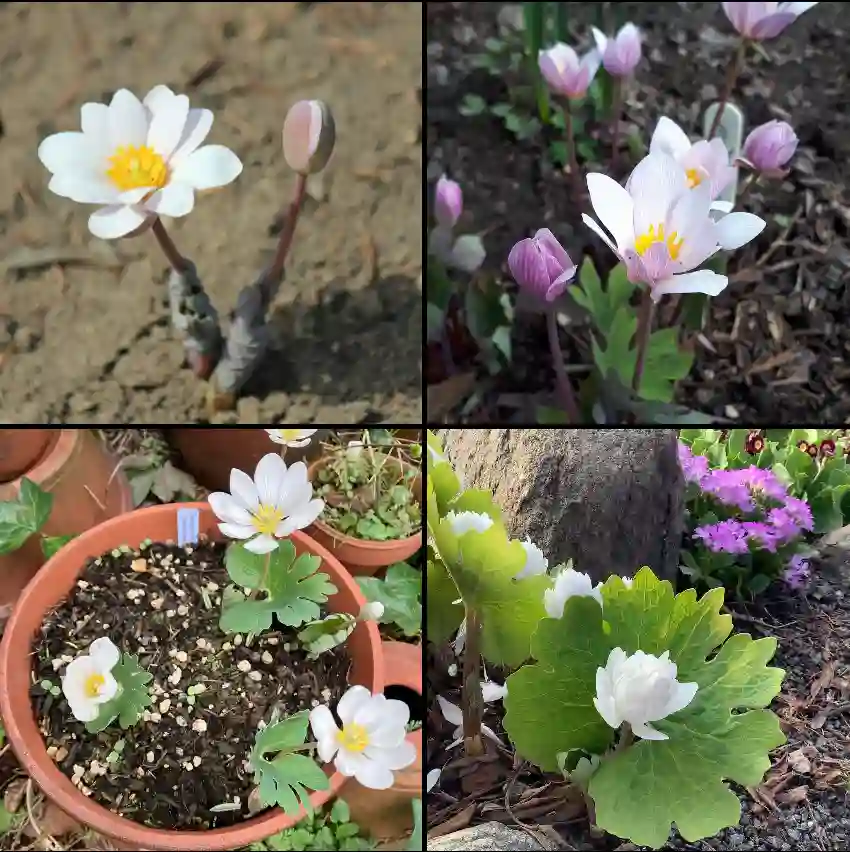What Is Clintonia Borealis?
Clintonia Borealis, also known as Bluebead Lily, is a native plant found primarily in the forests of North America. It thrives in cool, shady areas, especially under hardwood trees. The plant is recognized by its shiny, broad leaves and striking blue berries that appear after its yellow, bell-shaped flowers bloom in late spring to early summer. This perennial is a member of the lily family, making it an eye-catching addition to shade gardens.
5 Species in Genus Clintonia
How to Care for Clintonia Borealis?
Caring for Clintonia Borealis is relatively straightforward, but its specific needs make it suited for certain environments. It thrives in moist, well-drained soil with a rich organic composition. I find that it’s best to simulate its natural woodland habitat by adding a layer of mulch and compost. The plant prefers partial to full shade, so placing it under the canopy of taller trees is ideal. Although it can tolerate cooler temperatures, it doesn’t do well in extreme heat or dry conditions. During the summer, I water it regularly to ensure the soil remains damp but not waterlogged.
How to Propagate Clintonia Borealis?
Propagating Clintonia Borealis can be tricky, but I’ve had success using two main methods: seed sowing and division.
Seed Sowing: If you want to propagate via seeds, be patient—Clintonia seeds take a long time to germinate. I usually collect the blue berries when they’re ripe in late summer, and extract the seeds. It’s best to sow them immediately into a moist, shady seedbed. Germination might not occur until the following spring.
Division: This method is quicker and more reliable. In early spring, before new growth starts, I dig up a clump of Clintonia and carefully divide the rhizomes. Each section should have a few leaves attached. I replant them in shady, moist spots, and they typically establish within a season.
What to Plant with Clintonia Borealis?
When choosing companion plants, it’s important to consider Clintonia’s natural environment. I pair it with other shade-loving plants that enjoy moist conditions. Ferns, such as Dryopteris or Osmunda, make excellent companions. The contrasting textures of their fronds complement the bold leaves of Clintonia Borealis. I also like to plant it alongside Trilliums or Jack-in-the-pulpit for a layered woodland effect.
Is Clintonia Borealis Toxic?
Yes, the berries of Clintonia Borealis are mildly toxic. While they look striking, they contain compounds that can cause gastrointestinal distress if ingested. I always recommend caution if you’re gardening with pets or young children, as they might be tempted to taste the attractive blue berries. It’s important to inform anyone unfamiliar with the plant to avoid consuming any part of it.
What Are the Benefits of Growing Clintonia Borealis?
One of the key benefits of growing Clintonia Borealis is its low-maintenance nature once established. It’s also a fantastic choice for adding biodiversity to a woodland or shade garden. The plant attracts pollinators like bees and butterflies when it’s in bloom. Its berries are also enjoyed by birds, making it a great choice for wildlife gardens. I love the seasonal interest it brings, with its yellow flowers in spring and vibrant blue berries in the summer.
Common Problems with Clintonia Borealis
Despite being generally hardy, Clintonia Borealis can face a few challenges. The plant doesn’t fare well in areas with poor drainage, leading to root rot. I’ve found that adding organic matter to the soil helps improve its resilience. Slugs and snails can also be a problem, especially in moist environments. I use natural barriers like crushed eggshells or coffee grounds to deter them.
Another issue I’ve encountered is slow growth. Clintonia Borealis isn’t a fast-growing plant, so it’s essential to be patient. Make sure it’s planted in ideal conditions—deep shade and rich, moist soil—to help it thrive over time.
How Does Clintonia Borealis Compare to Similar Plants?
Clintonia Borealis can sometimes be confused with Maianthemum canadense, also known as Canada Mayflower. Both plants have similar leaf shapes and grow in similar environments. However, Canada Mayflower produces white flowers and red berries, while Clintonia’s flowers are yellow and its berries are a deep blue. Another common mix-up is with False Solomon’s Seal (Maianthemum racemosum), which has arching stems and white flowers in clusters, unlike Clintonia’s singular stalk.
How Does Clintonia Borealis Benefit the Ecosystem?
One of the reasons I enjoy growing Clintonia Borealis is its positive contribution to local ecosystems. The plant’s flowers are a source of nectar for pollinators like bees and certain butterflies. Its berries, though toxic to humans, provide food for birds in late summer and early fall. By incorporating this plant into your garden, you can help support the natural balance of wildlife in the area.
Does Clintonia Borealis Have Any Medicinal Uses?
In traditional herbal medicine, Clintonia Borealis was occasionally used by Native American tribes for its purported anti-inflammatory and pain-relieving properties. Some people used it to treat minor wounds or sore throats. While this historical use is fascinating, I always advise caution when dealing with any plant that could have toxic components.
Conclusion
Clintonia Borealis is a gem for shade gardens, bringing beauty and ecological value with relatively minimal care. Its stunning blue berries, glossy leaves, and wildlife benefits make it an excellent choice for gardeners who want to create a woodland sanctuary. However, its slow growth and the potential for root rot or slug damage mean it requires thoughtful placement and maintenance. Whether you’re an experienced gardener or a beginner, Clintonia Borealis is a rewarding plant to grow.
If i die, water my plants!



